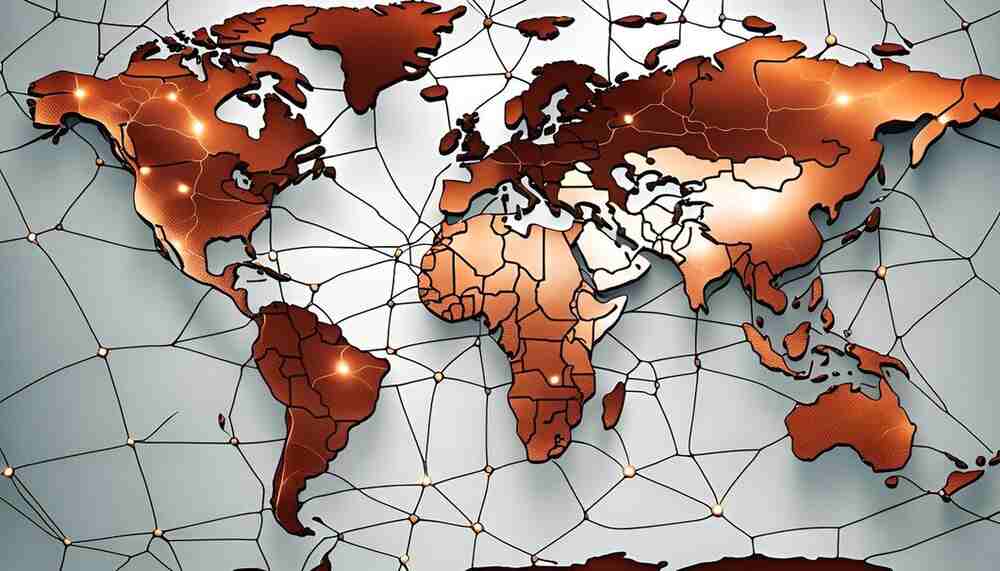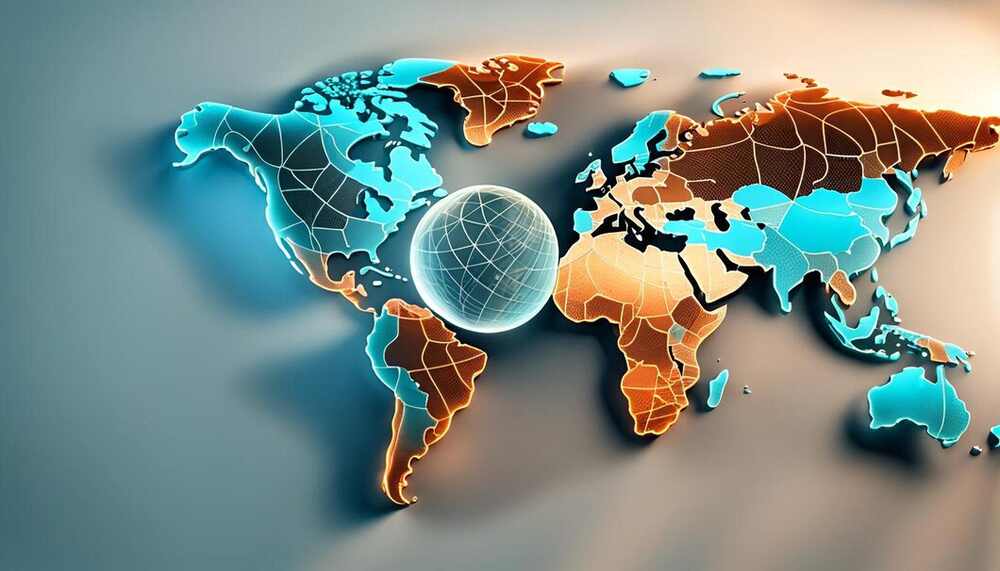Exploring the Future Map of the World: What Lies Ahead?

The future map of the world is an exciting topic that many people are curious about. It shows how our planet may change in the years to come. Scientists and experts believe that technology, climate change, and population growth will shape the world we live in.
As we think about the future, we can imagine new cities, advanced transportation, and even how people will live together. Understanding the future map of the world helps us prepare for what is to come. Let’s take a closer look at some amazing changes that might happen!

Understanding the Future Map of the World: Key Changes Ahead
The future map of the world is a fascinating idea that many people want to explore. Our planet is changing fast due to technology, climate change, and how people live. These changes will affect everything, from where we live to how we travel. It’s important to learn about these trends so we can be prepared.
New technologies are helping us make smarter choices. For example, cities are becoming “smart” with new apps and systems that improve everyday life. This means less traffic and cleaner air. As we think about the future, we can imagine places where everyone has access to these advancements.
How Technology Will Shape the Future Map of the World
Technology is a big part of the future map of the world. It will change how we connect and interact. Here are some ways technology will impact our future:
- Smart Cities: Cities will use sensors and data to help people live better.
- Online Learning: More kids will learn from home using the internet.
- Transportation: Self-driving cars and drones will make travel easier.
With these changes, our lives will be very different. We will need to adapt to new ways of learning and moving around. The map of the future will show places that are built with technology in mind.
Climate Change and Its Impact on the Future Map of the World
Climate change is another important factor to consider. It affects weather patterns and can cause natural disasters. Understanding its impact is crucial for everyone. Here are some effects of climate change:
- Rising Sea Levels: Some coastal cities may be underwater in the future.
- Extreme Weather: We might see more storms, floods, and droughts.
- Wildlife Changes: Animals will move to find new homes as their habitats change.
As we think about the future map of the world, we must pay attention to these issues. Protecting the environment will be key to ensuring a safe and healthy planet for everyone.
New Cities and Urban Development: The Future Map of the World
Urban development will also play a major role in shaping our future map. More people are moving to cities for jobs and opportunities. This leads to the creation of new urban areas. Here’s what to expect in future cities:
- Eco-Friendly Buildings: New homes will be designed to save energy and water.
- Parks and Green Spaces: Cities will have more parks for people to enjoy.
- Public Transportation: Buses and trains will become cleaner and faster.
These changes will make cities more livable. Everyone will benefit from cleaner air, more parks, and better transportation options.
Exploring Future Borders: Changes in the Future Map of the World
The future map of the world will also show changes in borders and countries. People are moving and migrating for many reasons, which can alter national lines. Here’s how borders might change:
- Migration Trends: More people moving to cities can shift population centers.
- Political Changes: New agreements may create different countries.
- Economic Factors: Wealthier countries may form new alliances.
As we think about the future, it’s important to consider how these changes will impact global relations. Understanding these shifts will help us prepare for a world that is always evolving.
Sustainable Living: A Part of the Future Map of the World
Sustainable living is becoming very important as we look toward the future. People are more aware of how their actions affect the environment. Here are some ways sustainable living will shape the future:
- Renewable Energy: Solar and wind power will be used more widely. This means less pollution and a cleaner planet.
- Waste Reduction: Communities will focus on recycling and composting to reduce waste.
- Local Food Sources: More people will buy food from local farmers. This supports local economies and reduces transportation emissions.
By adopting these practices, we can make the future map of the world a greener place. Everyone can play a part in protecting our planet for future generations.
Cultural Shifts and Their Influence on the Future Map of the World
As the world changes, so do cultures. The future map of the world will reflect these cultural shifts. Here’s how different cultures might influence the future:
- Globalization: People from different countries will share ideas and traditions. This can create a rich mix of cultures.
- Digital Communication: Social media will connect people across the globe, allowing them to learn from each other.
- Travel: More affordable travel options will let people experience different cultures firsthand.
These changes will help create a more connected world. Understanding various cultures will lead to greater acceptance and cooperation among people.
The Role of Education in Understanding the Future Map of the World
Education will play a vital role in shaping the future. It helps people learn about the world and prepare for changes. Here’s how education can influence the future map:
- Critical Thinking: Students will learn to analyze problems and find solutions.
- Environmental Education: Schools will teach kids about sustainability and how to protect the planet.
- Technology Skills: Learning about technology will help future generations adapt to new tools and innovations.
With a strong education, people will be better equipped to navigate the changes in the future map of the world. This will lead to a more informed and active society.
Imagining the Future Map of the World: A Creative Perspective
Imagining the future is a fun and creative exercise. We can think about what our world might look like in years to come. Here are some ideas to spark your imagination:
- Floating Cities: Some cities may be built on water to combat rising sea levels.
- Underground Living: People might live underground to escape harsh weather.
- Space Colonies: As technology advances, humans may even settle on other planets.
These imaginative ideas help us dream about the possibilities. They remind us that the future is full of potential, and we can all contribute to making it a better place.
Conclusion
In the future map of the world is an exciting idea that shows how our planet may change. With technology, climate change, and new ways of living, we can expect many different things. Learning about these changes helps us understand our world better. It also prepares us for a future where we can work together to solve problems.
As we imagine the future, we should remember that everyone can make a difference. Whether it’s using renewable energy, supporting local farmers, or learning about different cultures, our actions matter. By taking small steps today, we can create a brighter future for ourselves and for generations to come.
FAQs
Q: What is the future map of the world?
A: The future map of the world shows how our planet may change due to technology, climate change, and population growth.
Q: How will technology impact our future?
A: Technology will create smart cities, improve transportation, and make learning easier for everyone.
Q: Why is climate change important for the future map?
A: Climate change affects weather patterns, sea levels, and wildlife, which can change how we live and where we live.
Q: What can I do to help create a better future?
A: You can help by reducing waste, using renewable energy, and learning about different cultures.
Q: How can education shape the future map of the world?
A: Education teaches critical thinking, environmental awareness, and technology skills, helping people adapt to changes in the world.





